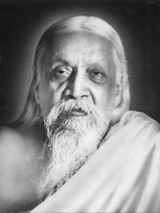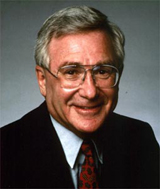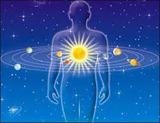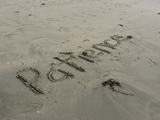Mental health
Time and health
Abstract
The sense of `time-urgency' arising from impatience is one of the causes of psychosomatic disturbances. This is because our dynamism is not adequately supported by a base of static power. This needs the cultivation of an inner poise through peace, silence and quietude as part of personality development. Such a programme should have its initiation in child development and education.
Introduction
In a fast moving world of intense competition and strife, the sense of time-urgency is an important factor. Perhaps, as Dowsett so succinctly remarked, our real competition is with ‘Time’ itself (1). That this sense of ‘time-urgency’ stemming from impatience not only disrupts our peace and equipoise but is also responsible for psychosomatic diseases was established in 1974 by Friedman and Rosenman. Their now classic description of Type-A behaviour in a group of middle-aged male executives showed that these subjects exhibited great drive, ambition, striving for recognition, competitiveness, a sense of time-urgency and multiple activities bound by ‘deadlines’. They also had hyperlipidemia and were more prone to coronary heart disease than matched controls who were not under urgent competitive stress (2).
‘Impatience’, which lies at the root of time-urgency is an attribute of the vital part of our personality. The vital is the repertoire of our conflicting emotions, desires and sensations. In the nomenclature of the Integral Yoga of Sri Aurobindo, the ‘vital’ is differentiated from the ‘mind’ which deals with cognition, intelligence and acquisition of knowledge and from the ‘physical’ which represents the material dimension of existence (3). In an excellent overview, Dr. A.S. Dalal describes how ‘impatience’ — a manifestation of the vital — is at the basis of time-urgency. A desire, unless checked by a higher intervening force (like mental will) or counterbalanced by some other desire, seeks immediate gratification. In fact, stronger the desire, greater is the impatience (4). This leads to a restless hankering in time. Dr. Dalal (5) points out that much before Friedman and Rosenman, the Mother alluded to the hurry sickness with a prophetic hint regarding its consequences along the perspective of health: “We — I mean men — live harassed lives. It is a kind of half-awareness of the shortness of their lives; they do not think of it, but they feel it half-consciously. And so they are always wanting — quick, quick, quick — to rush from one thing to another, to do one thing quickly and move on to the next one, instead of letting each thing live in its own eternity. They are always wanting: forward, forward, forward.... And the work is spoilt....
“And I have observed this is the cells of the body; they always seem to be in a hurry to do what they have to do, lest they have no time to do it. So they do nothing properly. Muddled people — some people turn everything upside down, their movements are jerky and confused — have this to a high degree, this kind of haste — quick, quick, quick.... Yesterday, someone was complaining of rheumatic pains and he was saying, ‘Oh, it is such a waste of time. I do things so slowly!’ I said (Mother smiles), ‘So what!’ He didn't like it. You see, for someone to complain when he is in pain means that he is soft, that is all; but to say, ‘I am wasting so much time, I do things so slowly!’ It gave a very clear picture of the haste in which men live. You go hurtling through life... to go where?...You end with a crash (6)!”
Counselling and psychotherapeutic techniques should take cognisance of this issue and evolve strategies to counter the sense of time-urgency. Unfortunately, forced to serve a high-profile clientele which takes pride in having engagements round-the-clock, psychotherapists prefer package programmes of shorter duration instead of directly addressing the issue. It is therefore necessary to construct a premise which can provide guidelines to cope with the sense of time-urgency.
Static and dynamic power
The search for a premise to cope with this is found in yogic psychology in the relation between static and dynamic power. Usually, ‘dynamism’ is considered to be an expression of power, activity and action. Yogic psychology describes dynamism as only one aspect of power. Power can also be represented along a static dimension. Moreover, it is this static power, represented in a timeless inner poise that supports and upholds the dynamic power of outer action. The sceptic will immediately ask: Does not a static inaction represent a negation of energy? Sri Aurobindo argues:
“The very conception of movement carries with it the potentiality of repose...; the very idea of energy in action carries with it the idea of energy abstaining from action;..(7).”
He goes on to describe that if one has the experience of a timeless stability, one can be capable of a more dynamic action within the limits of time (8). The perfect man can combine in himself silence and the activity (9). Poised in the eternal and the stable, one can whirl round securely in moving and multitudinous fields of action (10). The Mother elaborates the meta-psychology of this view:
“Look, there is the same difference between static power and dynamic power as between a game of defence and a game of attack; you understand? It is the same thing. Static power is something which can withstand everything, nothing can act upon it, nothing can touch it, nothing can shake it — it is immobile, but it is invincible. Dynamic power is something in action, which at times goes forth and may at times receive blows. That is to say, if you want your dynamic power to be always victorious, it must be supported by a considerable static power, an unshakable base (11).”
Usually, we are unaware of static power because, “... a human being becomes aware of power only when it is dynamic; a human being doesn't consider it a power except when it acts; if it doesn't act he does not even notice it, he does not realise the tremendous force which is behind this inaction — at times, even frequently, a force more formidable than the power which acts (12).”
Dr. Dalal thus rightfully surmises that many of our physical and psychological maladies stem from an excessive dynamism without a base of static power (13). This base of static power has to be established in our consciousness. Only then can we surpass this sense of time-urgency without abstaining from action.
Inner poise — a sense of eternity
The next pertinent question that arises is, what is the basis of static power? As time-urgency aries from impatience, dynamism from activity, likewise, static power comes from an inner poise (14). This inner poise gives a sense of eternity. It arises from peace, silence and quietude. The Mother explains the necessity of this poise:
“Men have a feeling that if they are not all the time running about and bursting into fits of feverish activity, they are doing nothing.... This illusion of action is one of the greatest illusions of human nature. It hurts progress because it brings on you the necessity of rushing always into some excited movement....
“Stand back from your action and rise into an outlook above these temporal motions; enter into the consciousness of Eternity. Then only you will know what true action is (15).”
“That is why some people have preached: The only moment that matters is the present moment. In practice it is not true but from the psychological point of view it ought to be true. That is to say, to live to the utmost of one’s capacities at every minute, without planning or wanting, waiting or preparing for the next. Because you are always hurrying, hurrying, hurrying....And nothing you do is good. You are in a state of inner tension which is completely false — completely false.
“All those who have tried to be wise have always said it — the Chinese preached it, the Indians preached it — to live in the awareness of Eternity. In Europe also they said that one should contemplate the sky and the stars and identify oneself with their infinitude — all things that widen you and give you peace (16).”
“Whatever has been done in the world has been done by the very few who can stand outside the action in silence;... In peace, in silence and in quietness the world was built; and each time that something is to be truly built, it is in peace and silence and quietness that it must be done...(17).”
Invoking peace and quietude
For establishing integral health, we have to bring in peace and quietude into our body. In fact, modern medicine has already started working on this premise. The relaxation response described by Herbert Benson and his colleagues in 1977, is an integrated hypothalamic response consistent with generalised decreased sympathetic activity (18). This response is incompatible with stress and anxiety and is the mechanism through which various relaxation techniques like biofeedback and meditation exert their therapeutically beneficial effects.
The relaxation response is definitely conducive to peace and quietude necessary for inner poise. Peace and quietude are not merely opposite to stress and anxiety — they exist in their own right.
“Quietude is a very positive state; there is a positive peace which is not the opposite of conflict — an active peace, contagious, powerful, which controls and calms, which puts everything in order, organises.... This true quietude is always a sign of force (19).”
If quietude is a ‘force’, the inner poise will not only be represented at the psychological (mental) level but also needs to be established at the vital and physical levels. In the Aurobindonian perspective where man is studied along hierarchised planes of consciousness, each phenomenon has different ramifications at different planes. Thus, time in mind-space has different movements from time in physical space (20). Likewise, the inner poise necessary to surpass the sense of time-urgency has also a hierarchised representation along the planes of consciousness:
(a) At the psychological (mental) plane, the inner poise is represented in a quietude gained by silencing the mind. The cultivation of a thought-free silent mind frees one from fixations, releases the mind from habitual thought-patterns and makes it receptive to higher influences (21);
(b) At the vital plane, the inner poise is represented in a ‘vital quietude’ or ‘absence of desire’ (22). Here two cautions are mandatory. Firstly, a calm mastery over desires has to be differentiated from inertia or somnolent passivity (23). Secondly, a very subtle differentiation has to be made between an intensity of aspiration and a vital impatience (24);
(c) At the physical plane, the inner poise can be felt as a solid state of peace stemming from ‘immobility’. This can be experienced in the Yogic posture of śhāvasana (‘corpse-posture’) and is an extension of the relaxation response. In fact, it has been hypothesised that muscular relaxation involved as an initial step in the śhāvasana posture cannot fully explain its beneficial effects — the state of immobility itself has something to contribute (25).
Inner poise — psychic being
Ordinarily, the mental, vital and physical parts of our being intermingle around an ego-principle. By the yogic process of self-perfection, they can be separated, individualised and related to each other around an ego-surpassing integrating principle — the psychic being. The psychic being represents the Atman of the Indian tradition in its evolving form. As it comes forward to replace the ego, one can start living at a deeper level of consciousness and experience a sense of wholeness, integrality, unity, peace, and unalloyed joy. Because it is the psychic being which carries a “sense of universality, limitless expansion, unbroken continuity (26).”
Developmental issues
The sense of time-urgency is an issue that needs to be tackled in child-development and educational programmes as part of personality development. Such a programme should start from birth through a multi-sensorial teaching programme. Prof. Winnicot has shown how a baby needs to go through a totality of sensory experiences. This lays a stable foundation for future growth. If the mother is not in a hurry and is not burdened by unnecessary tutoring, she spontaneously uses her intuition for a successful and satisfactory mothering experience. Unfortunately, adults are always in a hurry so children are left with incomplete sensory experiences which sow the seeds of disequilibrium and ill-health. Winnicot stresses the importance of total happenings, i.e. experiences which have a beginning, a middle and an end and enable babies to mature. He describes how a ten-month-old baby develops an interest in a spoon but after the first simple reaction, temporarily withdraws his interest, as if wondering, whether his mother is going to approve his action. Then, by carefully sensing his mother’s feelings, he allows his interest to return. He is tense however, until he actually puts the spoon in his mouth and chews it, thus making it ‘his own’;. Now he is confident and plays with the spoon. He also invites play by trying to feed his mother and others with the spoon, hiding the spoon and then rediscovering it, scooping imaginary food from a bowl and then imaginatively eating his broth, etc. Winnicot says,
“It (the experience) corresponds to the mystery of the middle of the body, the digestive processes, the time between when the food is lost by being swallowed, and when the residue is rediscovered at the lower end in the faeces and urine (27).” Now the baby drops the spoon. Does he like the sound of the spoon striking the floor? The spoon is picked up and is handed to him but he throws it away. He is reaching out for other interests and the show with the spoon is over. Thus Winnicot shows how the middle of things can be enjoyed (or tolerated if bad) only if there is a strong sense of start and finish.
“We have watched the baby develop an interest in something, and make it part of himself, and we have watched him use it, and then finish with it....there could be a beginning, a middle, and an end to what happened; there was a total happening. This is good for the baby (28).”
If adults are not in a hurry, the child is not deprived of an imaginative inner life which enriches and is enriched by sensory experiences.
Winnicot illustrates how inadequate feeding and elimination experiences contain the roots of future gastro-intestinal disturbances. Take the case of feeding. The baby enjoys the sensation of milk in his mouth. Once the milk is swallowed, it is ‘lost’ to the baby. He wants to rediscover the lost milk and knows the technique of bringing it back into his mouth. If the mother is not patient, she is depriving the baby of the joy of rediscovery (29). After all, isn’t this joy the greatest excitement for a baby? Thus throughout the ages, everywhere the first game of the child is ‘peep-bo’ — the rediscovery of the mother who hid behind the curtain and was ‘lost’ from the baby’s point of view. We have to pay a heavy price if in our haste, we deprive the baby of this wonderful game of self-discovery.
Winnicot explains, that when the baby is at ease, the digestive process proceeds automatically. There is always fluid (digestive juices) and air in the stomach. When the baby swallows milk, the volume of fluid increases. If the mother and baby are fairly calm, the pressure in the stomach wall adapts itself and the stomach gets a bit stretched. The temporarily increased pressure in the stomach may be uncomfortable and a quick way out of the trouble for the baby is to belch a little wind. If the baby is in an upright posture he belches spontaneously without regurgitating the milk. That is why mothers put their babies on their shoulders in the middle of a feed and pat their backs a little. Patting stimulates the stomach muscles and helps the baby to belch. If the mother gets impatient, the baby gets tense and the stomach takes a longer time to adapt to the increase in bulk. Not understanding this, the mother vigorously pats the baby making the baby more tense. After all the mother has been taught to pat on and on to make the baby belch. This becomes a ritual “interfering with the natural way, which is after all the only good kind of way (30).”
Again, the feeding process does not end with the swallowing of milk. Even after swallowing, the baby lies back and seems to contemplate his inside for quite some time. He enjoys the nice warm sensation in his belly. Winnicot warns that the baby should not be disturbed as this can lead to vomiting or an increased motility causing an incomplete digestion of the food. The feeding time actually extends up to the period when a gurgling sound signals the passage of food from the stomach to the small intestine. Winnicot compares the feeding time to an important part of a solemn occasion whose sanctity must not be disturbed by hurrying mothers or poking neighbours (31).
A similar solemnity is required in the management of the baby’s excretory functions. Left to himself, the baby can discover that the holding and releasing of urine and stool is a pleasurable sensory experience. If he is allowed to play and enjoy this game, he can spontaneously achieve bladder and bowel control without the fussing of his care-takers. Small babies can hold their motion for days without any harm. Again, very often, a first emptying of the rectum is followed by a certain amount of refilling. The mother should wait for the next contraction so that the next bit of stool may pass out. Winnicot states:
“Mothers who are always in a hurry always have to leave their babies with something in the rectum. This will either be passed out, causing unnecessary dirtying of napkins, or else it will be held in the rectum which therefore becomes less sensitive, and the beginnings of the next experience will be interfered with to some extent. Unhurried management over a long period of time naturally lays the basis for a sense of order in the baby’s relation to his excretory functions. If you are in a hurry, and cannot allow for the total experience, the baby will start off in a muddle (32).”
Educational issues
Unfortunately, in this world of competition, we are always trying to compete with time. Dowsett, in a interesting overview points out that time should not be brought into learning activity as it breaks into concentration and interest which are the chief pillars of the learning experience. He recommends that children should be introduced to values which do not depend on the time-sequence or chronology. For example; sincerity, enthusiasm, intensity, are peaks of experience that are independent of time or sequence. Students should be helped to recognise these values in history, literature, poetry, music and the sciences (33).
The aesthetic sense is a great creative and fulfilling medium of self-expression. It is not necessary that everyone should be an artist but one’s faculty of appreciation, one’s sense of beauty, one’s insight into form, colour and the ragas can be developed and refined. The cultivation of the aesthetic sense has a sublimating effect an our emotions. This contributes to the development of an inner poise when one grows up and faces a world of undue restlessness.
Time — a yogic perspective
The conquest of the sense of time-urgency promotes health and prevents psychosomatic complications. It is effected by the development of an inner poise even in the midst of dynamic action. This inner poise imparts a sense of eternity. It grows by instilling peace and quietude into our bodily system through silencing the mind, mastering desires and calming the physical fluctuations. If this endeavour can be further enhanced by the blooming of the psychic being, one can start living and acting from a deeper level of consciousness.
“Time presents itself to human effort as an enemy or a friend, as a resistance, a medium or an instrument. But always it is really the instrument of the soul.
“Time is a field of circumstances and forces meeting and working out a resultant progression whose course it measures. To the ego it is a tyrant or a resistance, to the Divine an instrument. Therefore, while our effort is personal, Time appears as a resistance, for it presents to us all the obstruction of the forces that conflict with our own. When the divine working and the personal are combined in our consciousness, it appears as a medium and condition. When the two become one, it appears as a servant and instrument.
“The ideal attitude of the Sadhaka towards Time is to have an endless patience as if he had all eternity for his fulfillment and yet to develop the energy that shall realise now and with an ever-increasing mastery and pressure of rapidity till it reaches the miraculous instantaneousness of the supreme divine Transformation (34).”
References
1. Dowsett, N.C. Psychology for Future Education. Pondicherry; Sri Aurobindo Society, 1977, p.40.
2. Friedman, M. and Rosenman, R.H. Type A behaviour and your heart. New York; Alfred A.Knopf, 1974.
3. Dalal, A.S. Living Within. Pondicherry; Sri Aurobindo Ashram, 1987, p. x-xiii.
4. Ibid. p. xxii.
5. Dalal, A.S. Psychology, Mental Health and Yoga. Pondicherry; Sri Aurobindo Ashram, 1991, p.153.
6. The Mother. Collected Works of the Mother, Vol.10. Pondicherry; Sri Aurobindo Ashram, 1978, pp. 202-03.
7. Sri Aurobindo. The Life Divine. Pondicherry; Sri Aurobindo Ashram, 1977, p.75.
8. Ibid. p.77.
9. Ibid. p.30.
10. Ibid. p.78.
11. Op. Cit. Collected Works of the Mother, Vol.4. p.368.
12. Ibid.
13. Op. Cit. Psychology, Mental Health and Yoga. p.152.
14. Ibid. pp. 152-53.
15. Op. Cit. Collected Works of the Mother, Vol.3. pp.66-68.
16. Op. Cit. Collected Works of the Mother, Vol.10. p. 203.
17. Op. Cit. Collected Works of the Mother, Vol.3. p. 67.
18. Benson, H., Kotch, J.B., Crassweiller K.D., Greenwood, M.M. Historical and Clinical Considerations of the Relaxation Response. American Scientist, 1977, 65: 441-5.
19. Op. Cit. Collected Works of the Mother, Vol.8. p.330.
20. Purani, A.B. Evening Talks with Sri Aurobindo. Pondicherry; 1970, p.103.
21. Sen, Indra. Integral Psychology. Pondicherry; Sri Aurobindo International Centre of Education, 1986, pp. 185-191.
22. Op. Cit. Collected Works of the Mother, Vol.8. p.330.
23. Ibid.
24. Op. Cit. Collected Works of the Mother, Vol.10. p.202.
25. Op. Cit. Psychology, Mental Health and Yoga. p.151.
26. Op. Cit. Collected Works of the Mother, Vol.12. p.33.
27. Winnicot, D.W. The Child, the Family and the Outside World. England; Penguin books, 1985, p.77.
28. Ibid.
29. Ibid. p.36.
30. Ibid. p.37.
31. Ibid. p.38.
32. Ibid. p.43.
33. Op. Cit. Psychology for Future Education, pp. 36-40.
34. Sri Aurobindo. The Synthesis of Yoga. Pondicherry; Sri Aurobindo Ashram, 1976, p.61-62.
Dr. Soumitra Basu is a practicing psychiatrist who has been reflecting on Integral Health.
Share with us (Comments, contributions, opinions)
When reproducing this feature, please credit NAMAH, and give the byline. Please send us cuttings.











